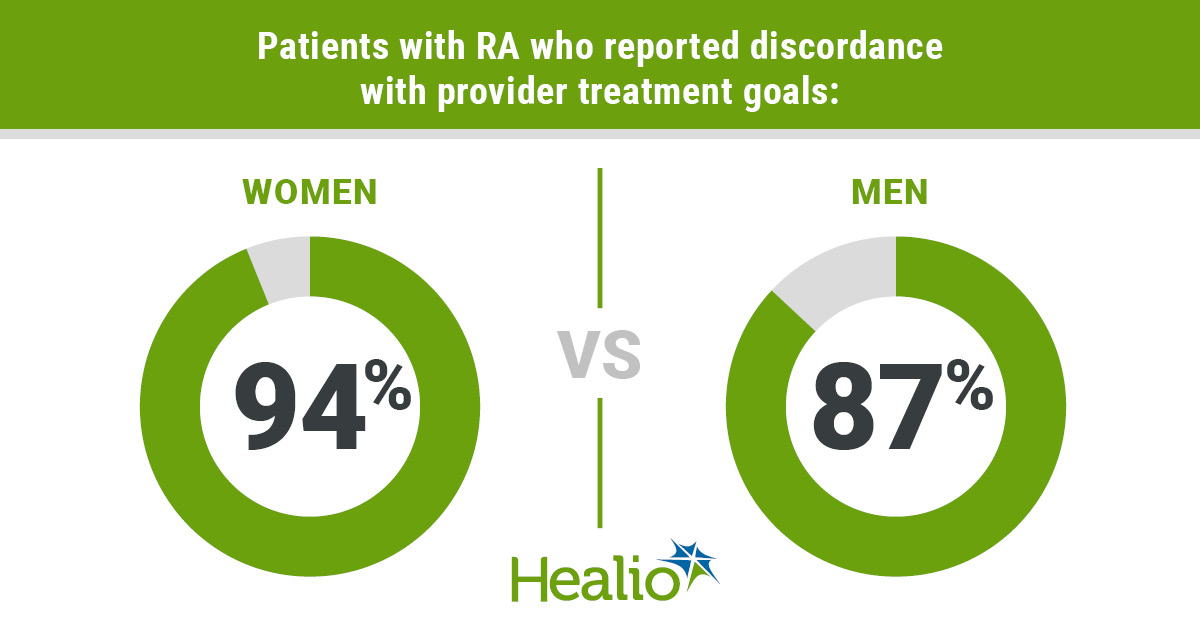Patient-provider treatment goal discordance in RA differs by age, gender, ethnicity
PHILADELPHIA — Discordance with the treatment goals of providers among patients with rheumatoid arthritis was associated with age, gender, age at diagnosis and other factors of care, according to survey data presented at ACR Convergence 2022.
“Patient-provider discordance in RA care occurs in one-third to one-half of cases and has been much discussed, usually with focus on differences in evaluation of disease activity levels,” Kelly O’Neill, BA, president of the Rheumatoid Patient Foundation and adviser to the Mayo Clinic Center for Social Media, said during the poster presentation.
Previously, the Rheumatoid Patient Foundation, in collaboration with Mayo Clinic rheumatology, published data on the commonalties among the treatment goals of patients with RA and the association with disease activity and other aspects of rheumatology care, including the treatment plans and discussions on shared goals. According to O’Neill, 37% of patients with RA reported having conversations about shared treatment goals with their providers, and “these patients had higher treatment satisfaction and greater disease improvement.”
In 2019, an anonymous online questionnaire was distributed to U.S. residents aged 18 years and older with a self-reported diagnosis of RA by a medical professional. Questions covered demographics, disease activity, diagnosis, history of disease-modifying anti-rheumatic drugs and treatment goals.
The survey was completed by 907 participants. The demographics of participants was 90% women, a mean age of 58 years and 11 years since diagnosis. A total of 740 respondents (82%) responded to the question, “how do you think your health care provider's treatment goals differ from your own goals?”, according to the poster, 53% (n = 392) reported their treatment goals did not differ, while 47% (n = 348) reported they did differ on treatment goals and provided one or more reasons why. The researchers identified 14 reasons for unalignment of goals, with seven being present in 10% or more of participant answers. Three major themes were created from 10 common reasons for unalignment: provider's approach, difference about treatment and lack of teamwork.

A higher discordance between patient and provider was seen among female patients, with 94% of women reporting unalignment compared with 87% of male participants (P < 0.001). On average, younger patients (P < 0.001) with an earlier mean age of diagnosis (P = 0.001), or who identified as Hispanic or Latino, were more likely to report discordance due to lack of teamwork.
“Other studies have also reported discordance in Hispanic people with RA,” O’Neill said.
For participants reported differing treatment goals and unalignment with providers, only 21% remembered having a discussion on shared goals compared with 61% of participants who reported alignment in treatment goals with their provider (P < 0.001).
“Further research should seek greater understanding of the role of shared goal discussion, RA patients’ treatment goals, any associated discordance with providers goals and how these may vary with patient demographics,” O’Neill said.

